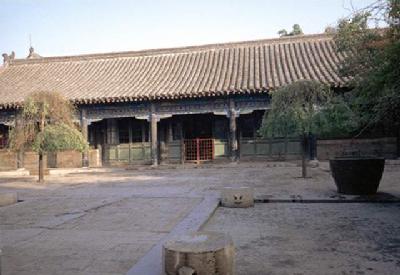Mansion, Temple and Cemetery of Confucius in Qufu
The Mansion, Temple and Cemetery of Confucius in Qufu, Shandong Province, are cultural sites and attract tourist from both China and abroad. In 1994, they were listed as world cultural heritage sites.
The Mansion of Confucius is the living quarters of the first grandson of Confucius, a great philosopher, educator and a founder of Confucianism. It is also known as Master Yanshen′s Mansion because in 1055, or the second year of the reign of Song Emperor Zhaozhen, Kong Zongyuan, the 46th generation male descendant of Confucius was given the title "Master Yansheng." The title was passed down to Kong Decheng, the 77th generation male descendant of Confucius. Built on an area of 160,000 square meters, the mansion has nine courtyards with 463 rooms along the east, west and middle routes. The houses along the middle route are the main part of the mansion. The first four yards contain offices and the other five serve as residences. At the rear is a garden. The mansion stores more than 7,000 volumes of files from 1534 (the 13th year of the reign of Ming Emperor Jiaqing) to 1948 and great quantities of rare and precious cultural and historical relics.
The Temple of Confucius was, in various dynasties, a place for worshipping Confucius. In 478 B.C., the second year after Confucius′ death, the ruler of the State of Lu converted the three-room Confucius′ former mansion into a temple and this became a place for worshipping Confucius. The temple was constantly renovated and expanded to its present size by emperors of the Western Han Dynasty and following historical periods. It covers an area of 218,000 square meters and is 1,129 meters in length from south to north. There are nine courtyards and 466 rooms along three routes in the left, right and middle. The temple has an outer wall, with four corner towers, which shelters ancient pines. The main buildings along the middle route are Kuiwen Pavilion, Thirteen Stele Pavilion, Xingtan Pavilion, Dacheng Hall, Hall of Confucius′ Wife and Shengji Hall. Dacheng hall stands out and is the main hall where Confucius was worshipped.
The temple houses some 2,000 tablets dating from the Western Han Dynasty right up to the founding of New China; they are one of the largest collections of tablets in the country. There are now three exhibition halls displaying tablets from the Han Dynasty and Six Kingdoms of Wei, stone statues from the Han Dynasty and calligraphic carvings on Yuhonglou tablets. The 17 tablets of Han Dynasty are the largest collection in the country by the quantity reserved in one place.
The Cemetery of Confucius is about 1.5 kilometers north of Qufu and is the Confucius family cemetery. It takes up 1.998 million square meters and around it there is a seven-kilometer-long hedge. The pavilions, towers, halls and archways built in various historical periods are set in a forest. Behind the Zhushui Bridge is the graveyard, dating from the Eastern Zhou, which houses the tomb of Confucius, the tombs of his son Kong Li and grandson Kong Ji. The tomb of Confucius is 6.2 meters high and has a circumference of 88 meters. It is included in the UNESCO world heritage list in 1994.
Source: http://old.cnta.gov.cn